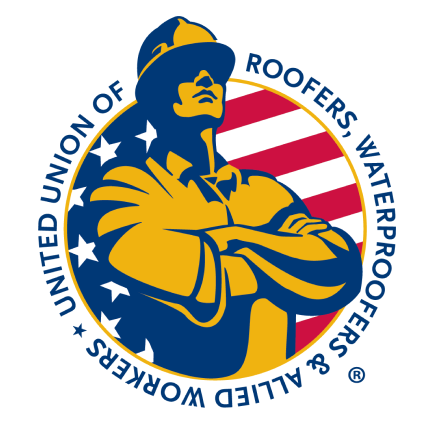Union Roofers and Waterproofers work on a variety of types of buildings, protecting those facilities against water intrusion and ultimate damage to the structure and its contents. Roofing in the commercial and industrial sector is generally of the built-up type or the single-ply category. In built-up roofing, layers or plies of felt are set in hot bitumen over insulation boards to form a waterproof membrane. An aggregate may be embedded in a final bitumen coat to protect the membrane from the ultraviolet radiation from the sun and other environmental hazards.
Single-ply roofing encompasses all of the newer plastic, thermoplastic polyolefin (TPO), rubber (EPDM), and other elastoplastic type membranes that have their seams welded by solvent or hot air or glued with contact adhesive to form a monolithic waterproofing membrane. These systems may have a stone or rock or paver block ballast installed over them or they may have partially or totally adhered to the substrate. These systems are also installed over roof insulation boards.
A separate category of roofing is the modified bitumen system that may be applied with hot bitumen or torched-on with high-intensity propane burners.
Another area of roofing is the residential type. Although these applications can also be done in the commercial and industrial sector as well. They include composition shingles, slate, tile, and metal roofs.
Waterproofing is a specialty aspect of the roofing trade but is no less important than a roof in protecting a building against moisture intrusion. Waterproofing can be below grade, which is usually foundation work. It can also be done on plaza decks, parking garage floors and other sections of a building where water or moisture protection is crucial. Materials used in waterproofing are generally of the same type used in roofing, although there are many specialty application materials that may be specified for this type of work.

